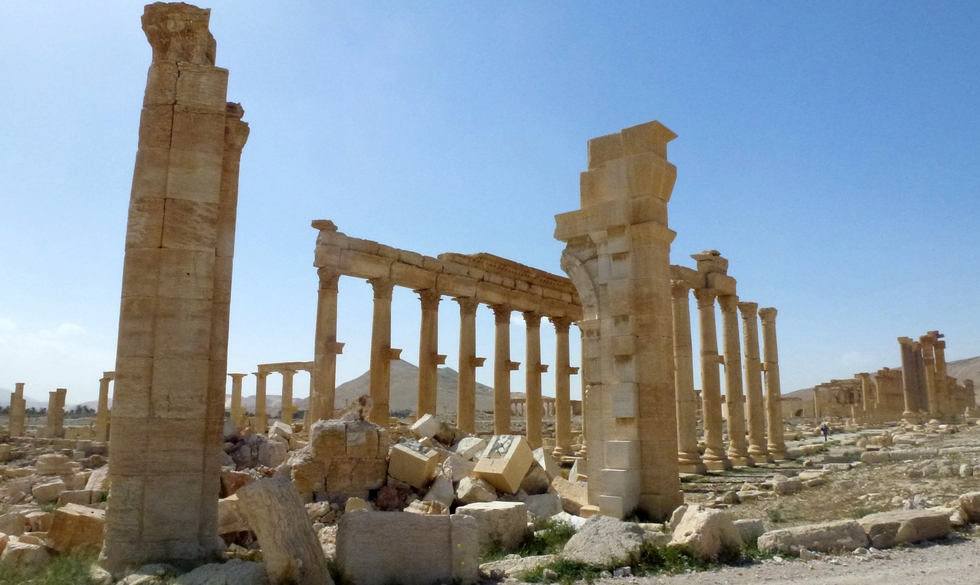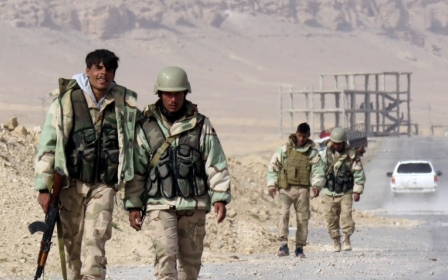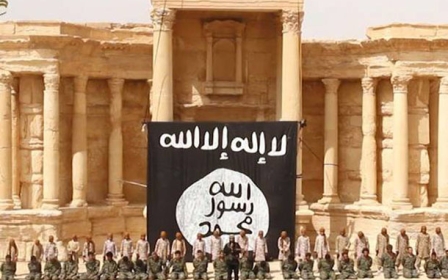80 percent of ancient Palmyra in 'good shape': Syrian expert

Syria's antiquities chief has said 80 percent of ancient Palmyra are in "good shape" but will take years to restore to their former condition, according to the first surveys of the ruins since the Syrian army forced out Islamic State militants.
But Maamoun Abdulkarim told the AFP news agency on Monday that his department would need five years to restore the site due to damage caused by the group.
"Eighty percent of the ruins are in good shape," he said.
"If we have UNESCO's approval, we will need five years to restore the structures damaged or destroyed by IS," he said, expressing hope that work could begin within a year.
Abdulkarim described destruction in Palmyra as a "war crime," saying the world "could have completely lost Palmyra... The joy I feel is indescribable."
The UNESCO chief, Irina Bokova, has hailed what she called the "liberation" of Palmyra and said the agency will send experts to assess damage to the site, in co-ordination with Syrian government officials.
Many around the world have celebrated Sunday's landmark recapture of the iconic ancient town, with the mayor of London Boris Johnson writing an opinion piece in Sunday night's Telegraph entitled "Bravo for Assad," celebrating what he called "the military success of one of the vilest regimes on earth".
The advance was not hailed across the board, however, with members of the Syrian opposition accusing pro-government forces of co-ordinating their recapture of the town with IS.
Asaad Aoun al-Zaabi, head of the anti-Assad opposition's negotiating bloc, said on Monday that IS had agreed to withdraw from Palmyra to give the government extra clout at forthcoming peace talks.
The remarks came after the Syrian army defeated IS in Palmyra on Sunday in the climax of a three-week offensive, with support from an intensive campaign of Russian air strikes in an around the city.
IS overran Palmyra in May last year, using Palmyra's amphitheatre for public executions and murdering the city's 82-year-old former antiquities chief, Khaled al-Assaad.
The group destroyed the shrine of Baal Shamin, demolished the 2,000-year-old Temple of Bel, blew up the second-century Arch of Triumph and destroyed a dozen of the city's best preserved tower tombs.
Residential areas in the adjacent modern town, where 70,000 people lived before the war, were deserted and damage there was widespread, the correspondent said.
Annie Sartre-Fauriat, a member of a group of UNESCO experts on Syrian heritage, said: "Everyone is excited because Palmyra has been 'liberated', but we should not forget everything that has been destroyed."
"I am very doubtful about the capacity, even with international aid, of rebuilding the site at Palmyra. I think there are probably other priorities before rebuilding ruins."
Syrian forces press advantage
Government forces turned to nearby IS-held towns on Monday, including al-Qaryatain, southwest of Palmyra, and Sukhnah towards the northeast.
"The army was concentrated around al-Qaryatain, and today the military operations began there," a military source in Palmyra told AFP.
"That is the next goal for the Syrian army. They also have their eyes on Sukhnah."
At least 400 IS fighters were killed in the battle for the city, the Syrian Observatory for Human Rights said. On the government side, 188 troops and militiamen were killed.
The ancient city, northeast of Damascus, drew 150,000 tourists a year before Syria's civil war and is known to Syrians as the "Pearl of the Desert".
Syrian state television broadcast footage from inside Palmyra's famed museum, showing jagged pieces of sculptures on the ground and blanketed in dust.
President Bashar al-Assad hailed the victory at Palmyra as "important".
IS is under growing pressure from Syrian and Iraqi forces determined to retake bastions of its self-proclaimed "caliphate".
On Thursday, the Iraqi army announced the launch of an offensive to eventually recapture Mosul, held by the militants since June 2014.
Russian forces, which intervened in support of longtime ally Assad last September, were heavily involved in the Palmyra offensive despite a major drawdown last week.
Russian warplanes carried out 40 combat sorties around Palmyra in the last 24 hours, striking 117 "terrorist targets" and killing 80 IS fighters, Moscow's defence ministry said Sunday.
Putin telephoned Assad to congratulate the Syrian leader, adding that "successes such as the liberation of Palmyra would be impossible without Russia's support", a Kremlin spokesman said
Assad said the victory was "fresh proof of the efficiency of the Syrian army and its allies in fighting terrorism".
Middle East Eye propose une couverture et une analyse indépendantes et incomparables du Moyen-Orient, de l’Afrique du Nord et d’autres régions du monde. Pour en savoir plus sur la reprise de ce contenu et les frais qui s’appliquent, veuillez remplir ce formulaire [en anglais]. Pour en savoir plus sur MEE, cliquez ici [en anglais].




